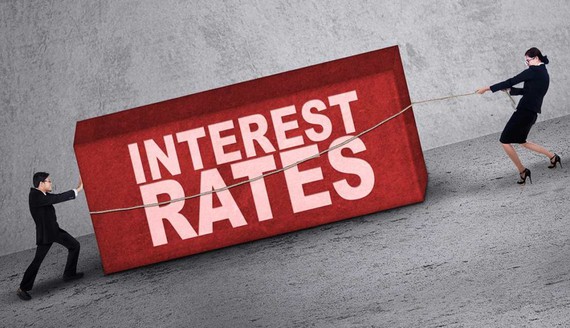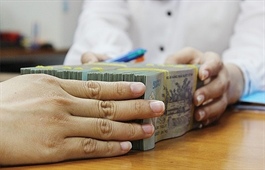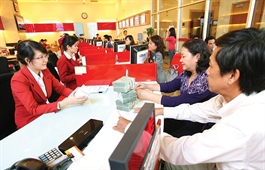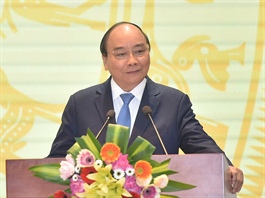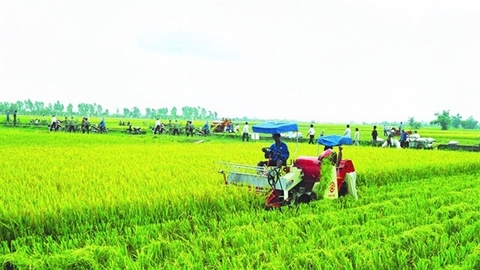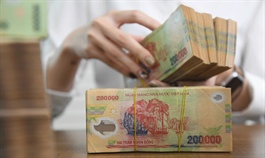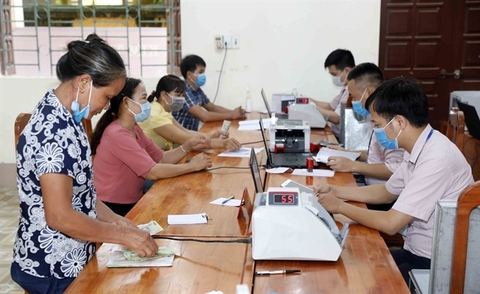Difficult to increase interest rate in 2021
Difficult to increase interest rate in 2021
The last few years have seen an erratic movement of interest rates, which in coming time is more likely to depend on certain rules. The three factors to maintain a steady low interest rate being appropriate opportunity, advantage location, and good relations, are analysed herewith in the hope of maintaining low interest rates in the coming year and in subsequent following years.
Illustrative photo.
|
Appropriate opportunity
Interest rates around the world are forecast to being kept low for a long time so as to once again stimulate and revive the economy. The US Federal Reserve (Fed) is almost certain about not raising interest rates until at least mid-2022. In addition, the US will also pump in a lot of money through many fiscal stimulus packages. The US dollar will therefore find it difficult to appreciate, or may even fall, as has been happening over the last few months. The dollar index has fallen 5.8% since the beginning of the year, and from the peak established in March, it has fallen 11.8% to close at 90 points, the lowest level in two and a half years.
A weak US dollar will certainly weaken the VN dong against other currencies, especially the Yuan (CNY), thereby helping to increase the competitive advantage of Vietnamese exports without having to actively adjust the exchange rate. Since the beginning of the year, CNY has appreciated by 6.9% against the VND.
Advantage location
Inflation was a constant concern in the first half of 2010s, but after 2015 it has been well under control. Looking to the future, and besides the Covid-19 pandemic that caused demand to decline, the cost push factors such as food and energy prices will not have an adverse affect on inflation. In particular, as an agricultural country and the largest rice exporter in the world, Vietnam can fully take the initiative in stabilizing food prices through export quota control and price stabilization. Rice prices increased in early 2020 due to large import demand from Covid-19 affected countries, but then fell very rapidly.
In terms of food, the price of pig breeds showed a decrease while the price of live pig was still relatively high, giving a boost to the pig industry. It is estimated that the total number of pigs in November 2020 increased by 12%, compared with the same period last year. This is the main reason why the price of pork has decreased since the middle of the year. In the energy field, world oil prices will find it difficult to increase due to low travel demand during the ongoing pandemic. However, oil prices will cool in the event when the pandemic is fully contained and controlled, or when there is geopolitical stability in the Middle East or US shale oil production and OPEC output cut agreement is eased.
The VND exchange rate is certainly being kept stable because of an abundant supply of the US dollar. The change in economic structure towards private economic development has helped increase the trade surplus in the last five years. In 2020, it is forecast that the State Bank of Vietnam will buy an additional USD 15 bn for foreign exchange reserves, increasing the value of reserves to USD 95 bn, and set to exceed USD 100 bn in 2021.
The State Bank of Vietnam (SBV) uses liquidity as a common tool in the open market. However, SBV also has another effective tool which is the credit line. From valuable lessons learnt during the 2008 financial crisis, the State Bank of Vietnam has now started to impose credit growth limits for each bank since 2012. Deposit and credit growth has thus become more balanced, directly impacting liquidity. In recent years, credit growth has shown signs of decreasing gradually, but economic growth is improving by the day. This is proof that the growth model based only on demand through credit is completely wrong.
Monetary easing in coming time will focus on reducing interest rates and directing credit to priority sectors such as manufacturing, agriculture, and exports. Therefore, credit growth is used mainly to stabilize liquidity and to reduce and keep interest rates low. A growth model based on supply stimulus, through enhancing competitiveness and expanding markets, such as the export markets, will be the key to Vietnam's growth in the future.
With low interest rates, Vietnamese goods will become more competitive. According to the World Bank, the average lending interest rate in Vietnam in 2019 was 7.71%, in China only 4.35%, while inflation in the two countries is 2.8% and 2.9%, respectively.
Good relations
For many years, the monetary policy has always been on the right track in its dual mission of stabilizing the macro-economy and supporting economic growth. Credit growth has gradually reduced from 17% in 2017 to 14% in 2019. Although the message of the State Bank of Vietnam is focused on flexible management, through concerted actions, we can be confident that the monetary policy is focused on reducing and keeping interest rates low for a long time, and may maintain a status quo for many coming years.
For the corporate world, lower interest rates are good news. With the total outstanding loans of the whole economy at about VND 10,000 trn, if the interest rates reduce just by 1%, businesses would save upto VND 100 trn, equal to 50% of corporate bonds issued in 2020. On the civilian side, lower interest rates have a two-way impact. The advantage is reduced cost in buying a house or on many consumer goods which then make for a more comfortable lifestyle. However, the opposite is reduced income from savings.
Reducing income due to lower interest rates will be difficult to immediately compensate with investment, but in the long term, the shift of capital flow from savings to investment will inevitably support growth. This raises an urgent need for a capital market large enough to absorb the savings flow, otherwise this cash flow will move to venture capital channels, creating unpredictable consequences.
The capital market also sees favorable conditions with low interest rates. However, with the bond market structure still in its infancy, the product and the knowledge of the people or investors about bonds as well as fund certificate products is still low, so the capital market is slow to take this opportunity. However, the loss of savings will be offset by greater benefits from economic growth, leading to increased income and employment.


